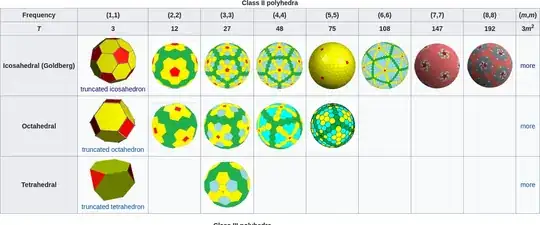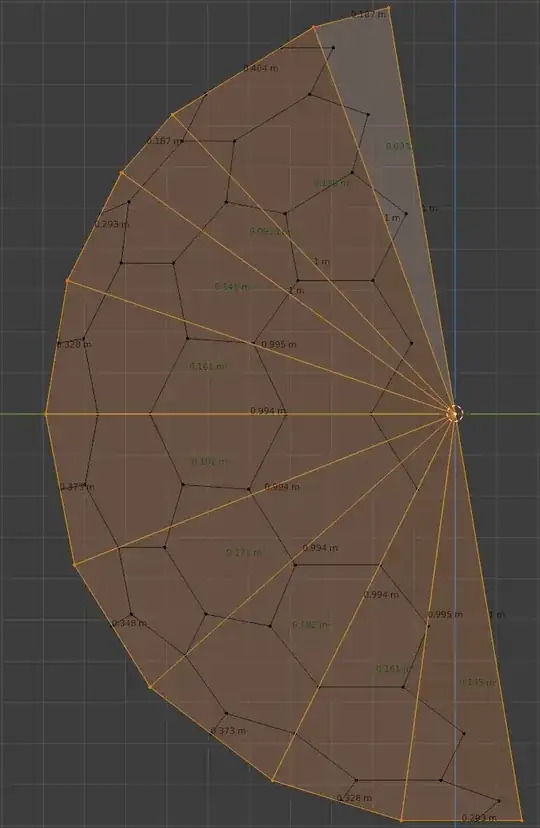I'll attempt to answer this specific case, the $G(2, 2)$ Goldberg polyhedron.
For referencing the faces, let's use this photo from Wikipedia:

We have pentagons, yellow hexagons and green hexagons.
We would like to figure out the following:
- Edges between pentagons and yellow hexagons.
- Edges between yellow hexagons.
- Edges between yellow hexagons and green hexagons.
- Edges between green hexagons.
Note that this page already gives the numbers to many decimal places, and clicking on the coordinates button below the picture takes us to this link, which gives the polynomials that need to be solved, if you care about very exact numbers.
Another practical way of calculating the numbers is by creating a geodesic dome in Blender (after enabling the "Add Mesh: Geodesic Domes" addon under Edit » Preferences » Add-ons). Hit Shift+A to add a new geodesic dome. What I find useful is cutting it in half using a boolean modifier and a cube, then find a diagonal of size $R=2$, and taking measurements only on one half of the diagonal, like so:

I enabled the "Edge Length" and "Face Area" under "Measurement Options", which is available in edit mode (Tab) under "Viewport Overlays" in the top-right corner.
Here we can see the following edges, starting from top, going clockwise:
- $0.187m$ — edge between yellow hexagons.
- $0.404m$ — diagonal of a green hexagon.
- $0.187m$ — edge between yellow hexagons.
- $0.293m$ — height of a pentagon.
- $0.328m$ — height of a yellow hexagon.
- $0.373m$ — height of a green hexagon.
- $0.348m$ — height of a green hexagon in another direction.
- $0.373m$ — height of a green hexagon.
- $0.328m$ — height of a yellow hexagon.
- $0.293m$ — height of a pentagon.
Distances between the origin and some vertices (first, second, third, fourth and the last one) are $1$, the distance to the other "vertices" in the cross diagram is less since those are not really edges of the polyhedron. However, those distances can be calculated using the Pythagorean theorem based on the edges they belong to.
Simplifying all these relations should in theory bring you to the 6th order polynomial from the page above.
In any case, Blender is a nice free tool for such concrete measurements, and can help with visualisations as well.


antiview geo_2_2_d. Again, I haven't used this program. – Blue Dec 09 '14 at 14:00